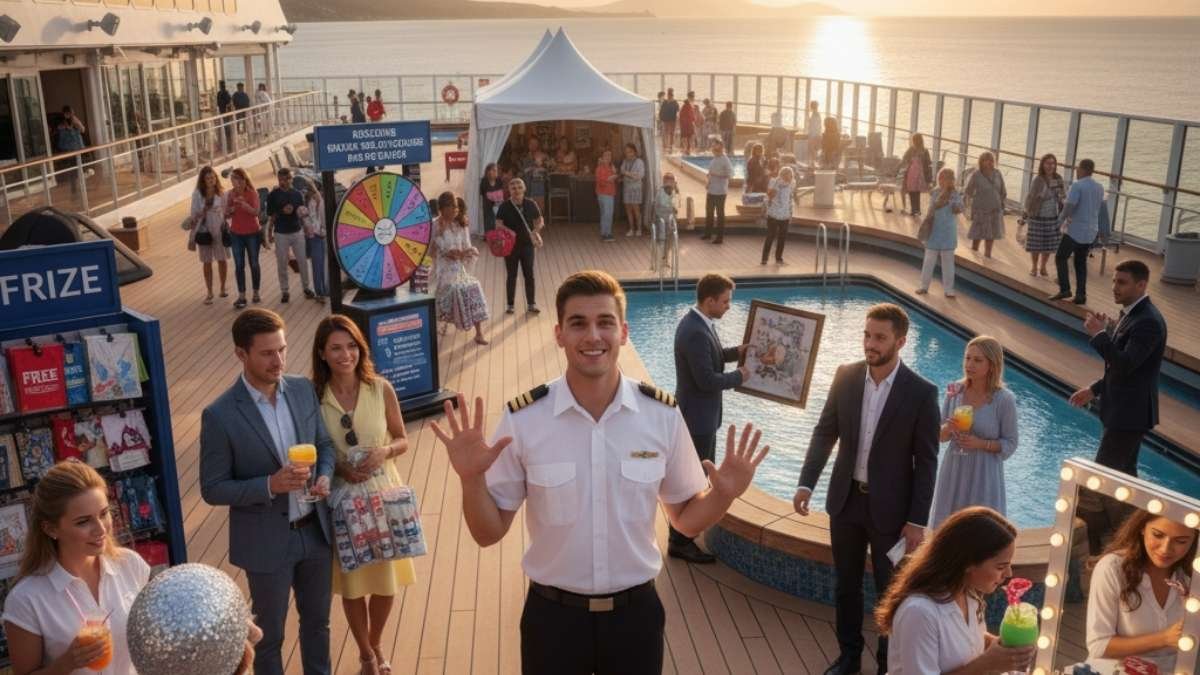
For the last ten years, I’ve been the guy smiling at you from the gangway. I’ve seen that look on your face a thousand times. The pure, unfiltered joy of a first-time cruiser about to step into a floating city of dreams. You see the endless buffets, the sparkling pools, the promise of leaving all your worries on the shore.
And honestly? I love that look. It’s why most of us work here.
But there’s something you don’t see. Just beneath the polished decks and the friendly smiles, there’s a machine. Not the engine that powers the ship, but a revenue engine, and it’s been fine-tuned for decades to do one thing: gently, almost invisibly, separate you from your money.

My name doesn’t matter. I’m a senior Guest Services officer, and I’ve been on the front lines of this machine. I’m the one who has to explain the shocking final bill to a family who thought everything was included. I’m the one who has been trained on the scripts, the psychological tricks, and the sales funnels that are built into every corner of this ship.
This isn’t a resort. It’s a perfectly controlled marketplace where you are the most valuable commodity. And I’m writing this because I think you deserve to know how the game is played. Not to scare you off cruising—it can be a fantastic way to see the world—but to arm you. To give you the playbook so you can have the vacation you thought you were paying for.
The Real Business Model: Your Ticket Was Just the Cover Charge

Okay, first things first. You have to understand why all this happens. That amazing deal you got on your cruise fare? The one that made you click “book” in the first place? For the cruise line, that’s often just enough to break even. Seriously. It covers the mind-boggling costs of fuel, port fees, food, and keeping the lights on.
The real profit—the money that makes the shareholders happy—comes from what you spend after you’re on board.
And it’s not a small amount. We’re talking about 30-35% of the company’s entire revenue coming from onboard spending. In 2023, for every dollar they made from tickets, they made another 31 cents from onboard sales. Think about that. Projections for 2025 show the average person spending over $82 a day on top of their fare. For a couple on a typical 8.6-day cruise, that’s an extra $1,400 they weren’t necessarily planning for. And for some lines, it’s even higher. Norwegian Cruise Line Holdings (NCLH) reported a staggering onboard spend of over $126 per person, per day in the second quarter of 2024.
This isn’t an accident. This is the entire business model. It’s why every interaction has the potential to become a sales pitch. The ship isn’t just your hotel; it’s a 24/7 store, and you’re in a completely captive market.
They’re Counting on Your “Vacation Brain”
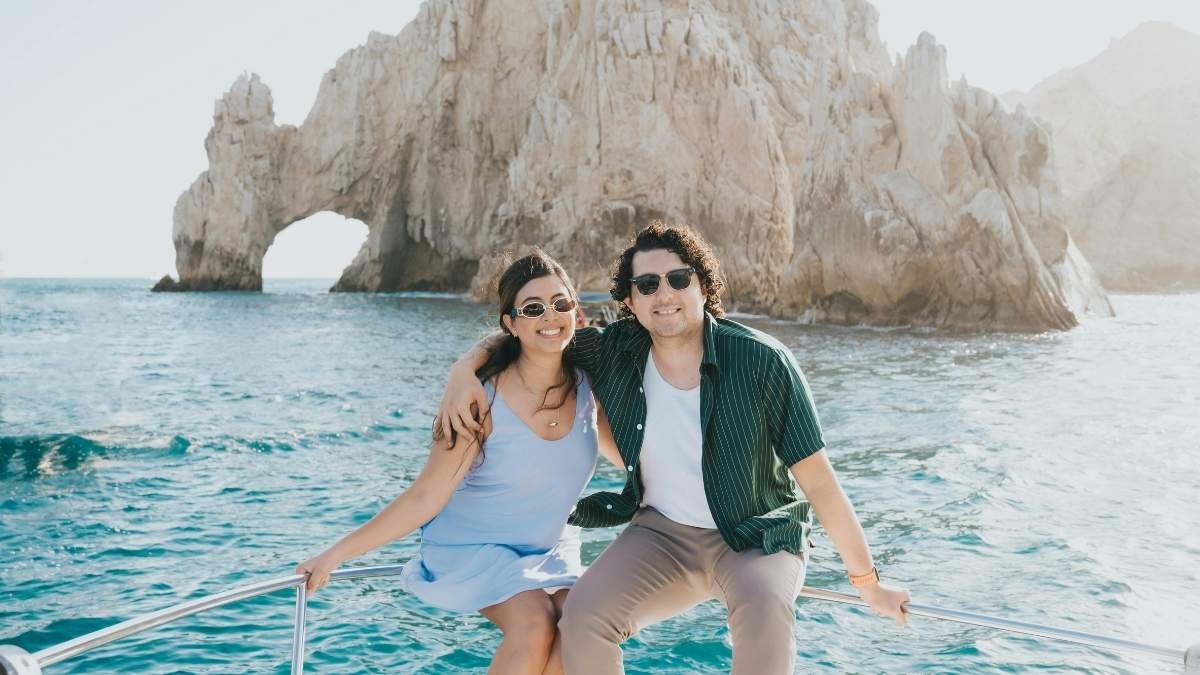
Here’s the secret sauce that makes it all work: your brain. The moment you step on that ship, something shifts. The stress hormone, cortisol, starts to drop. At the same time, your brain gets a lovely little bath of dopamine—the chemical of pleasure and reward—from all the new sights, sounds, and experiences.
Scientists call it “vacation brain,” and it’s a real, chemical phenomenon. It makes you happy, relaxed, and… a terrible financial decision-maker.
Your normal mental guards, the ones that make you think twice about buying a $17 cocktail, just kind of… go on holiday, too. You’re chemically primed to say “yes” to things you’d normally question. You’re more impulsive, less sensitive to price, and you’re looking for ways to feel good.
The entire ship is engineered to take advantage of this. It’s a cashless society where you just swipe your room key. Swiping a card doesn’t feel like spending real money, does it? It’s a well-known psychological trick that removes the “pain of paying.” Then, they hit you with a constant stream of offers that prey on some of our most basic human instincts:
- Scarcity & Urgency: You’ll hear a lot of “limited time offer,” “port day only,” or “last chance to buy.” This is designed to make you panic and buy without thinking, because what if you miss out?
- FOMO (Fear Of Missing Out): You see a crowd lining up for the art auction or the photo gallery. Your brain immediately thinks, “Everyone else is doing it, I should too!” That’s social proof in action, and it’s incredibly powerful.
- Selling an Identity: You’re not just buying a massage. You’re buying the feeling of being a relaxed, pampered person. You’re not just buying a photo; you’re buying the memory of a perfect family. The purchase becomes part of the identity you want to have on vacation.
The “scams” I’m about to break down for you aren’t bugs in the system. They are the system. They’re the perfectly designed, psychologically-backed encounters that make the whole business model work. Just look at the difference between what you pay on the ship versus what you’d pay for a similar item on land. It’s what we call the “convenience tax.”
Onboard vs. Onshore: The “Convenience” Tax
| Item/Service | Average Onboard Cost | Average Onshore Equivalent |
| 50-Minute Massage | $120 – $250 + 18-20% auto-gratuity | $100 – $150 (High-End Spa) |
| Cocktail | $14 – $17 + 18-20% auto-gratuity | $12 – $15 (Resort Bar) |
| 8×10 Photo Print | $20 – $45 | $3 – $5 (Online Print Service) |
| Daily Wi-Fi (per device) | $17 – $31 | ~$10 (or free at most hotels) |
| Bottle of House Wine | $40+ | $20 – $25 (Restaurant/Store) |
The Seven Traps I See People Fall Into Every Single Week
Trap 1: That “Fancy” Art Auction with the Free Champagne
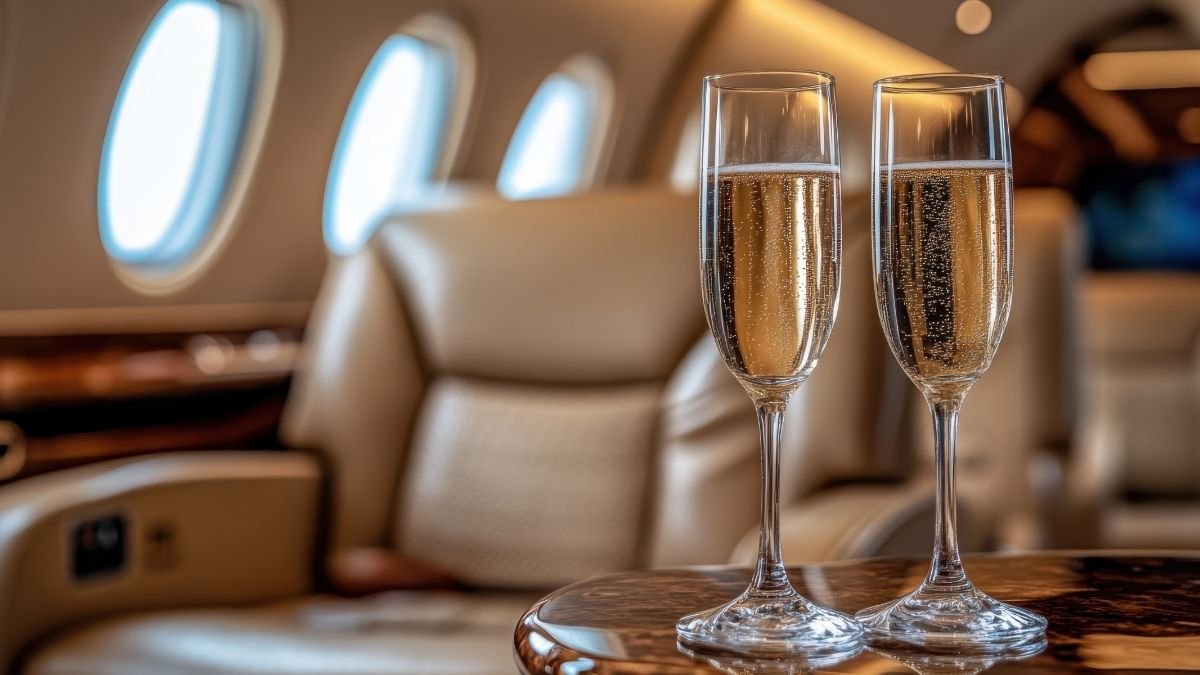
How it looks: It feels like the classiest event on the ship. A beautiful gallery, well-dressed staff, and waiters circling with trays of free champagne. You’re invited to an “exclusive” auction to buy “investment-grade” art from famous names. It feels sophisticated, a little taste of the high life. The main company you’ll see running these is Park West Gallery.
What it really is: Look, it’s not a cultural event. It’s a high-pressure sales pitch disguised as bubbles. The “art” is almost always mass-produced prints. They call them “giclées” or “lithographs,” and sometimes an artist will add a couple of quick brushstrokes and call it “hand-embellished” to make it sound unique. But it’s not. Former employees have called it “worthless shopping mall poster art” sold at insane markups. I’ve seen the horror stories, like the person who spent $169,000 on pieces that were later valued at only $25,000 by a real-world appraiser.
The playbook they use:
The Champagne Trick: That free bubbly isn’t just to be nice. It’s a tool. It lowers your inhibitions and makes you a little looser with your wallet. The auction itself is pure theater—the fast-talking auctioneer, the manufactured excitement, the “last chance” urgency—it’s all designed to get your adrenaline pumping so you stop thinking and start bidding.
Phantom Bidders: A common tactic is called “shilling.” The auctioneer will literally invent bids from the crowd to drive the price up to a secret minimum. They might mention it in the fine print, but almost no one realizes they could be bidding against thin air. And the “appraisals” they show you? They’re often from Park West itself, which is a massive conflict of interest.
The Bait and Switch: This is the ugliest one. I’ve seen it happen. A family wins a piece they love, and afterward, they’re told there was a “mistake” in the pricing, or the one they won is actually a different, less valuable version. When they come to my desk at Guest Services to complain, all I can do is tell them the gallery is a third-party company, and the cruise line isn’t responsible. It’s heartbreaking.
The whole thing works because it’s happening on the ship. It feels safe. But you’re in international waters, which means many of the consumer protection laws you rely on at home don’t apply here.
How to beat it: The second you hear “free champagne” and “art investment,” a little alarm should go off in your head. It’s a sales pitch. Go for the entertainment if you want, but keep your hands in your pockets. If you see a piece you genuinely love, take a picture of it. Spend the $30 on an hour of Wi-Fi and look it up online. I guarantee you’ll find it—or something very similar—for a fraction of the price from a land-based gallery.
Trap 2: The Spa’s “Relaxation” Ambush

How it looks: It’s marketed as your personal sanctuary. The brochures are full of serene-looking people getting massages, promising an escape from everything. It’s the one place on the ship that’s supposed to be all about you.
What it really is: Behind that calm music is one of the most aggressive sales floors on the ship. Most ship spas are run by an outside company, usually OneSpaWorld (which used to be called Steiner). And their business model is almost entirely built on commission. Is the therapist giving you that amazing massage? They’re a salesperson. They have daily and weekly sales targets they have to hit. Their base pay is often tiny; their real income, and whether they even get another contract, depends on how many expensive products they can sell you.
The playbook they use:
- The Post-Massage Pitch: They wait until you’re at your most vulnerable. You’ve just had an hour-long massage, you’re in a state of bliss, maybe a little sleepy, and you’re lying on the table. That’s when it starts. The therapist, whom you’ve just built a rapport with, will start pointing out your “problem areas”—tense shoulders, dry skin, whatever. And, what a coincidence, they have a line of products that is the only solution. It’s incredibly awkward to say no in that situation, and they know it.
- The Price Gouge: The price of the treatment itself is already sky-high, often double or triple what you’d pay at a nice spa on land. Then, they automatically add an 18-20% gratuity on top of that inflated price, a detail that’s usually buried in the fine print.
It’s a fundamental conflict of interest. You’re there for a therapeutic experience, but the person providing it is financially motivated to be a salesperson. They’re using the trust and intimacy of that moment to hit a quota.
How to beat it: Be proactive. When you fill out your intake form, there’s usually a spot for notes. Just write, “No product pitch, please. Thank you!”. This tells them right away you’re not a target. If they start the pitch anyway, have a polite but firm line ready. “Thank you, but I’m not interested in products today” usually works. A great one I’ve heard from passengers is, “My dermatologist has me on a very strict routine, so I can’t try anything new”. And my personal favorite, which always gets a laugh and ends the conversation: smile and ask, “Is it free? I’ll take it if it’s free”. To save on the treatment itself, always book on a port day when the spa is desperate for business.
Trap 3: The “Insider” Port & Shopping Talk

How it looks: On the first sea day, there’s a big presentation in the main theater. A super energetic and charming “Port & Shopping Ambassador” gives you the inside scoop on the best places to shop in your upcoming ports. They give you maps, coupon books worth “$200 good as cash,” and raffle off some prizes. It seems like a genuinely helpful service.
What it really is: It’s a 100% paid advertisement. That “ambassador” doesn’t work for the cruise line; they work for a marketing company that gets paid by the stores they’re promoting. Every single shop they recommend has paid a hefty fee to be on that “exclusive” map, and the cruise line gets a kickback from every single sale they generate.
The playbook they use:
- The Fake “Cash”: That “$200 good as cash” is the biggest lie. It’s not cash. It’s not credit. It’s a booklet of coupons that requires a huge minimum purchase at one of their partner jewelry or souvenir shops. Think “$200 off a purchase of $1,000 or more.” You’re not saving money; you’re being tricked into spending a lot of it at stores that have already inflated their prices to cover the promotion.
- Manufacturing Trust: The presenter will mix in some genuinely useful, if generic, information about the port to make themselves seem like a credible expert. They’re using the authority of the cruise line to steer you directly to their paid partners.
This whole system is designed to keep you inside a bubble of approved, high-priced stores. It funnels thousands of people away from the more authentic, better-value local shops that are often just a few streets away.
How to beat it: Just skip the talk. It’s an hour of your vacation you’ll never get back. Before you even leave home, spend 20 minutes on TripAdvisor or cruise forums for the ports you’re visiting. You’ll get much better, unbiased advice. When you get to port, ignore the map they hand you. Walk five to ten minutes away from the cruise terminal. I promise you, that’s where you’ll find the real deals and the authentic crafts.
Trap 4: The Casino’s Hidden House Advantage
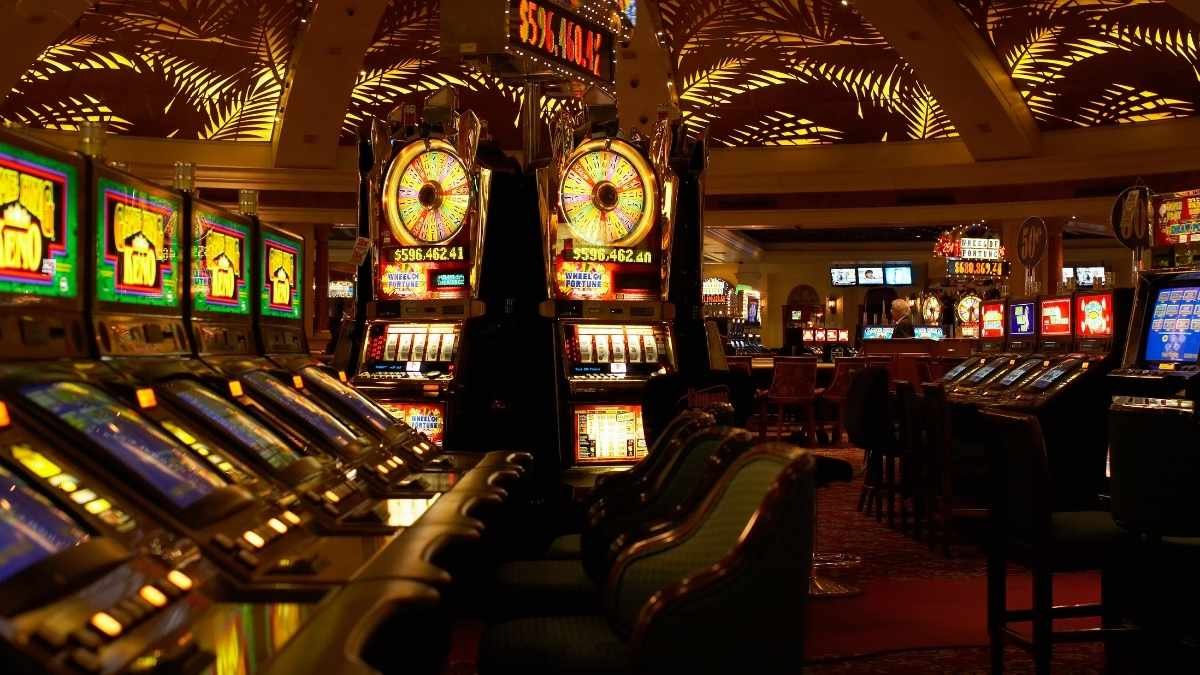
How it looks: It’s a blast of light and sound, designed to feel just like Vegas. It’s a fun way to kill an evening, especially on sea days when you’re looking for something to do.
What it really is: Yes, you can win. People do hit jackpots. But you need to know that you’re playing at a statistical disadvantage compared to a regulated, land-based casino. Because they have a captive audience with nowhere else to go, they can tweak the rules and payouts to give the house a bigger edge. It’s not illegal, it’s just business.
The playbook (the math):
- Blackjack: On land, a natural blackjack usually pays 3:2 (a $10 bet wins you $15). On most cruise ships, it pays 6:5 (your $10 bet only wins you $12). That one little change massively increases the house’s advantage over time.
- Video Poker: Serious players on land look for “9/6” machines. You will rarely find these at sea. Ship machines are typically lower-paying “7/5” or “6/5” versions, which means your money disappears faster.
- Slot Machines: While cruise lines have to follow some regulations, they’re often less strict than places like Nevada. The rumor among crew is that the Return to Player (RTP) percentage on ship slots is set lower, around 80-85%, compared to the 90% or higher you’d find in a competitive Vegas casino.
- Roulette & Craps: You’ll almost always find the American “double zero” roulette wheel, which has worse odds than the European single-zero version. And in craps, the best bets on the table are often restricted.
You’re paying a hidden price for the novelty of gambling in the middle of the ocean. That price is worse odds.
How to beat it: Go in with your eyes open. Know that the odds are not in your favor. The best way to approach the casino is to treat it as an entertainment expense, just like a show or a fancy dinner. Set a strict budget for what you’re willing to lose before you walk in, and when it’s gone, it’s gone. Walk away. If you’re a serious gambler who actually cares about winning, save your money for Vegas.
Trap 5: The Photo Package Ransom
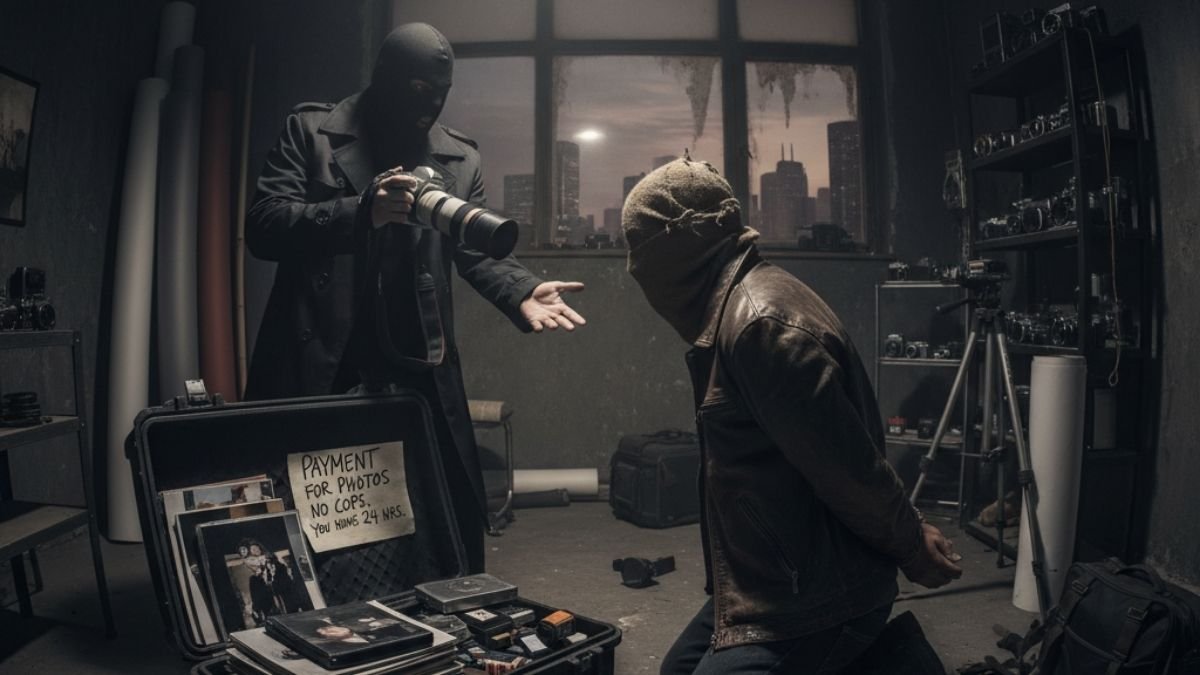
How it looks: They’re everywhere from the moment you board. Friendly photographers at the gangway, in the dining rooms, in front of backdrops, at every port. They offer to capture your memories so you don’t have to, ensuring the whole family is in the shot. It’s convenient.
What it really is: It’s a massive revenue generator built on selling your own memories back to you at a crazy markup. A single 8×10 print can cost anywhere from $20 to $45. The digital packages, which they push hard, can run into the hundreds, or even over a thousand dollars.
The playbook they use:
- The “Shoot Now, Pay Later” Model: It costs nothing to have your picture taken, so you say yes. Over the week, they’ll take dozens, maybe hundreds of photos of your family. This creates a psychological trap. You’ve already invested the time posing for all these pictures; it feels like a waste not to buy them.
- The Last-Day Panic: On the last day of the cruise, the photo gallery is a scene of chaos. All your photos are displayed, a tangible collection of your vacation. The staff creates a sense of extreme urgency, telling everyone that all photos will be permanently deleted the moment the cruise ends. This triggers a powerful fear of loss. You feel pressured to buy now or lose those memories forever.
- The Confusing Packages: The pricing is designed to be complicated. A package might only include photos where someone from your specific cabin is present, so pictures of your friends in another room don’t count. Group photos are often excluded. It’s a minefield of fine print.
You’re not just buying a photo. You’re essentially paying a ransom for a memory they’ve captured and held hostage.
How to beat it: Use your own phone. Seriously, modern smartphone cameras are incredible. Ask another passenger or a crew member (not a photographer!) to take a group shot for you; most people are happy to help. If you really want one professional portrait from formal night, just buy that one photo. It’s almost always cheaper to buy one or two favorites a la carte than to get sucked into an expensive package.
Trap 6: The Drink Package Math Problem
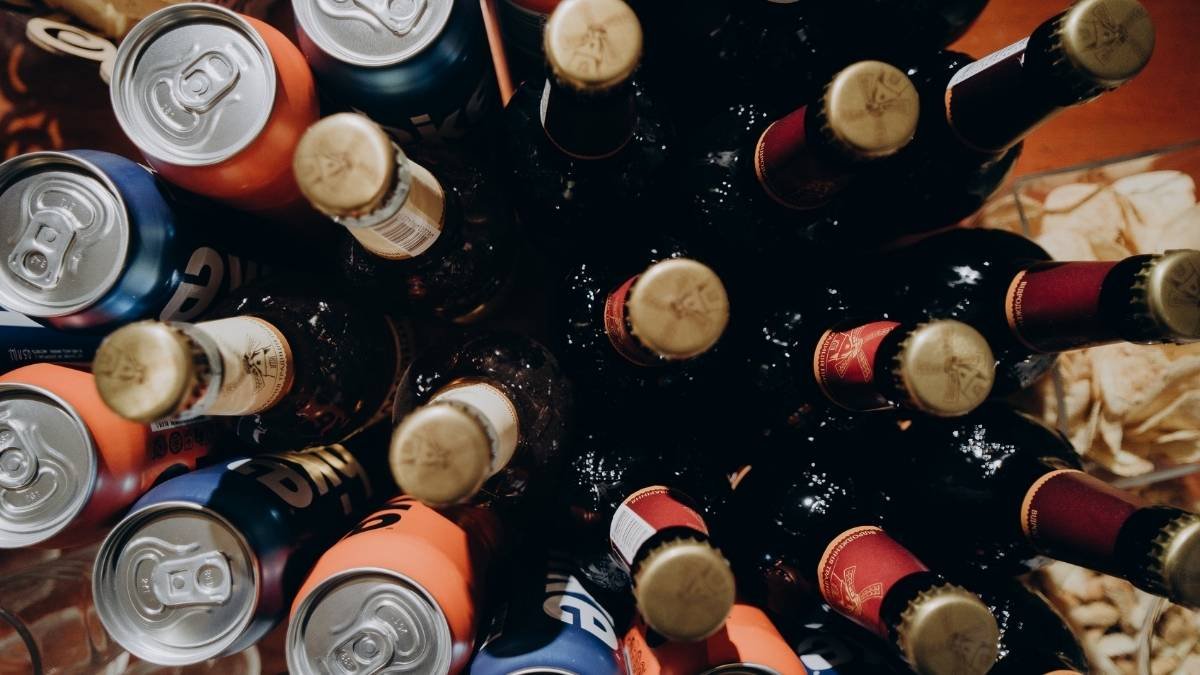
How it looks: It’s the ultimate promise of a worry-free vacation. Pay one flat daily fee and drink whatever you want, whenever you want—cocktails, coffees, sodas, water. No more signing checks, no more looking at prices.
What it really is: For most people, it’s a bad deal. The break-even point is set incredibly high on purpose. To make it worth the cost—which can be $80 to over $100 per person, per day—you need to drink something like 5-7 alcoholic drinks, plus a few specialty coffees and sodas, every single day. If you’re a moderate drinker, you will almost certainly lose money.
The playbook they use:
- The Sunk Cost Fallacy: Once you’ve paid that huge upfront cost, your brain chemistry changes. You stop thinking, “What do I feel like drinking?” and start thinking, “What do I need to drink to get my money’s worth?”. It turns your vacation into a daily math problem and encourages you to drink way more than you normally would.
- The Fine Print: The packages are full of traps. There’s usually a price limit per drink (anything over $15 might not be included). They often exclude the minibar, room service, or certain premium coffee shops. And the biggest one: if one adult in a cabin buys it, every other adult in that same cabin has to buy it too. This is to stop sharing, but it forces couples with a light drinker to pay double for a package they can’t use.
- Real Scams: This goes beyond just bad value. Scammers have set up fake customer service numbers that show up at the top of Google searches. You call what you think is the cruise line to add a package, give them your credit card, and they charge you for the package plus hundreds in fake fees. There are even stories from crew forums about bartenders using the card of a guest with a package to pour a drink for another passenger who gives them a cash tip. The charge gets buried in the package-holder’s account.
How to beat it: Do the math before you buy. Be honest with yourself about how much you actually drink, and remember you’ll be off the ship for hours on port days. A great tip is to use a drink tracker app on your phone for the first day and just pay as you go. You’ll probably be shocked at how much less you spend than the package price. And never call a number you found on Google; only use the official cruise line website or their app to make changes. Finally, check your onboard bill every single day.
Trap 7: The “All-Inclusive” Lie: Death by a Thousand Fees
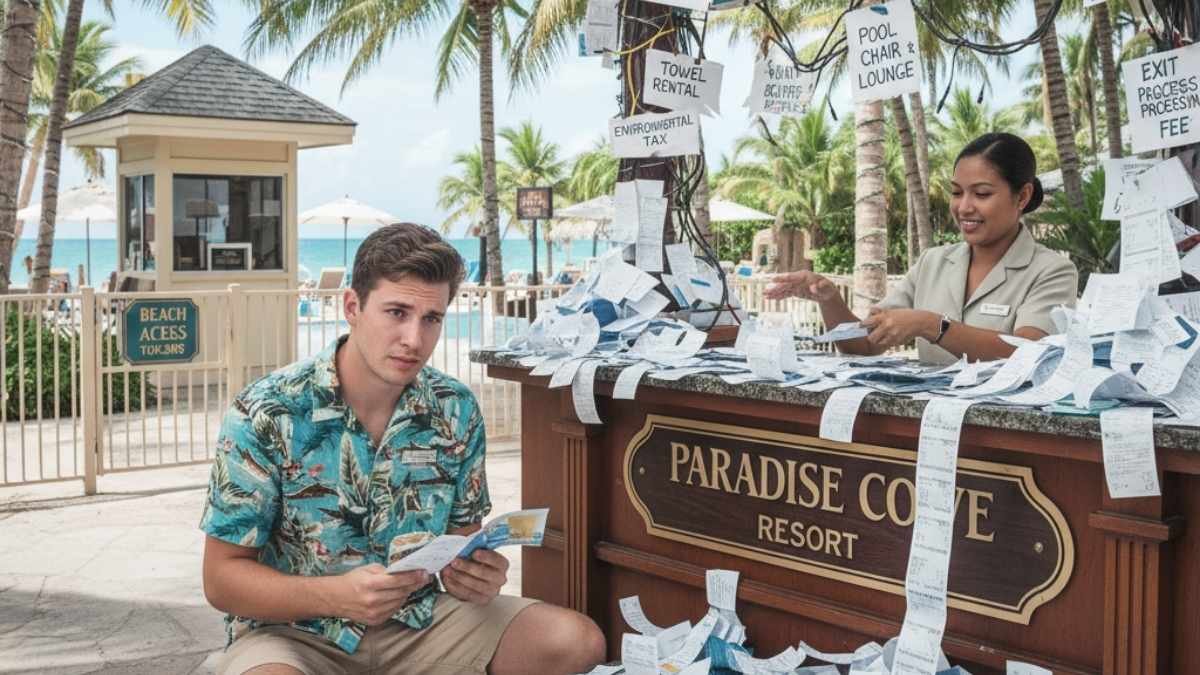
How it looks: You paid your cruise fare. You were told it was “mostly inclusive.” You figure you’re all set.
What it really is: That fare was just the beginning. The cruise industry has mastered what’s called “drip pricing”—luring you in with a low price and then hitting you with a wave of mandatory fees that can inflate your total cost by 19% to over 100%. That final bill is the number one cause of arguments at my Guest Services desk on the last morning.
The playbook (the fees):
- Automatic Gratuities: This is the big one. Every day, the cruise line automatically adds a “crew appreciation” charge to your account. It’s usually between $16 and $25 per person, per day. For a couple on a 7-day cruise, that’s an extra $224 to $350 you weren’t expecting. And here’s the kicker: this is not an optional tip. It’s a mandatory service charge that the cruise lines use to subsidize the crew’s base salary. It’s part of their wages, just unbundled from the fare to make the sticker price look lower.
- The 18-20% on Everything: On top of the daily charge, an 18-20% service charge is automatically added to every single thing you buy—every drink, every spa treatment, every specialty dinner. The receipt will still have a line for an additional tip, tricking countless people into tipping twice.
- The Little Things: It doesn’t stop. Wi-Fi is ridiculously expensive. Room service, which used to be free, often has a fee now. And my personal favorite: the $25 charge if you lose a pool towel.
It’s all about making that initial price look as attractive as possible, knowing the true cost won’t be clear until you’re already on board.
How to beat it: You have to budget for these costs from the start. When you’re looking at a cruise fare, immediately calculate the total daily gratuities for your group and add it to the price. That’s the real price. Pre-paying your gratuities is actually a smart move; it locks in the rate and gets the payment out of the way. Always, always check your receipts for an “auto-gratuity” before you add another tip. And most importantly, check your onboard account on the TV or app every single day. Catching a mistake early is easy. Trying to fix it on the last morning with 200 other angry people is a nightmare.
The Dangers Before You Sail and In Port
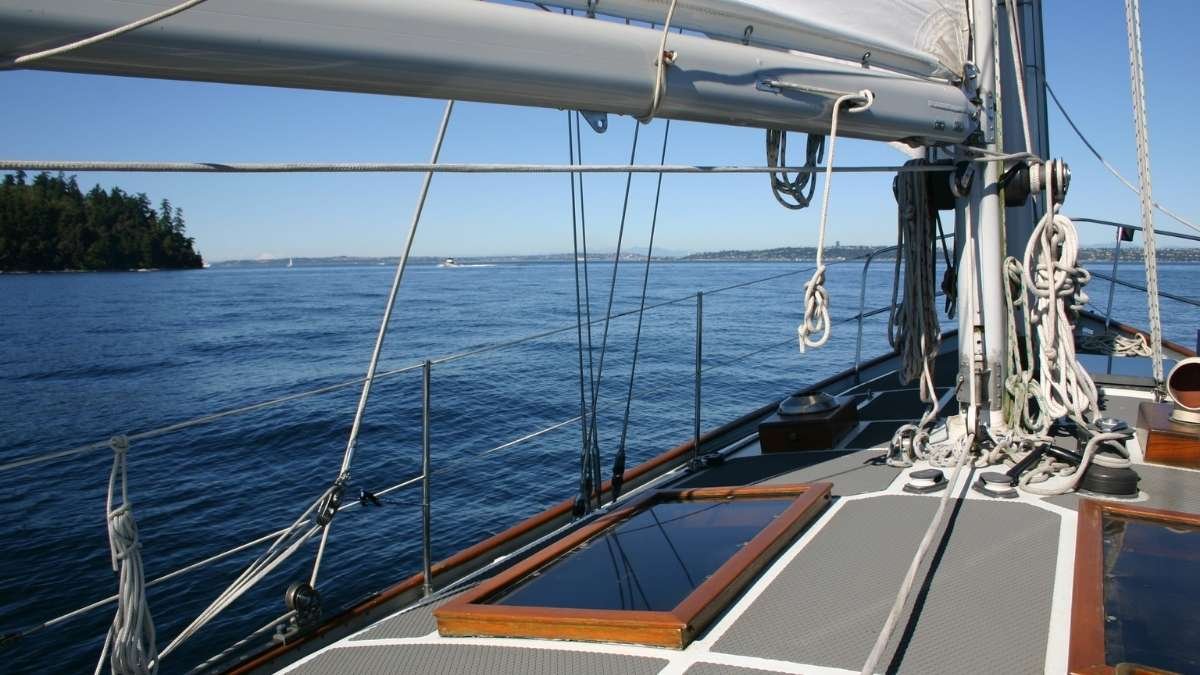
The ship isn’t the only place you need to keep your guard up. The game starts the moment you start planning and follows you into every port.
The Scams That Happen Before You Even Pack
Your excitement about an upcoming trip makes you a perfect target.
- Fake Travel Agents: Be very careful in big cruise-related Facebook groups. Scammers will pose as fellow cruisers or travel agents, then send you a private message with an unbelievable deal. The catch? They’ll demand payment through Zelle, Venmo, or a bank transfer. Never do this. Reputable agents will never ask for payment this way. Those apps are for sending money to people you know and trust; they have zero fraud protection.
- “You’ve Won a Free Cruise!”: If you get an email, text, or see an ad saying you’ve won a free cruise, it’s a scam. It’s a phishing attempt to steal your personal information. Or, they’ll tell you that you have to pay hundreds of dollars in “port fees” and “taxes” to claim your prize, which often ends up costing more than a real cruise.
- The Imposter Call Center: This one is terrifyingly effective. Scammers pay to have their fake customer service numbers appear at the top of Google search results for cruise lines. You think you’re calling Royal Caribbean to add a drink package. A professional-sounding person answers, asks for your booking number, and pulls up your real reservation. They add the package for you, take your credit card, and tack on hundreds in bogus “service fees” you’ll never see again.
How to stay safe: Only use official channels. Book directly on the cruise line’s website or with a certified travel agent you know and trust. Never, ever pay for travel with a cash app. And if you need to call customer service, get the number from the official website’s “Contact Us” page, not from a Google search.
The Hustle in Paradise
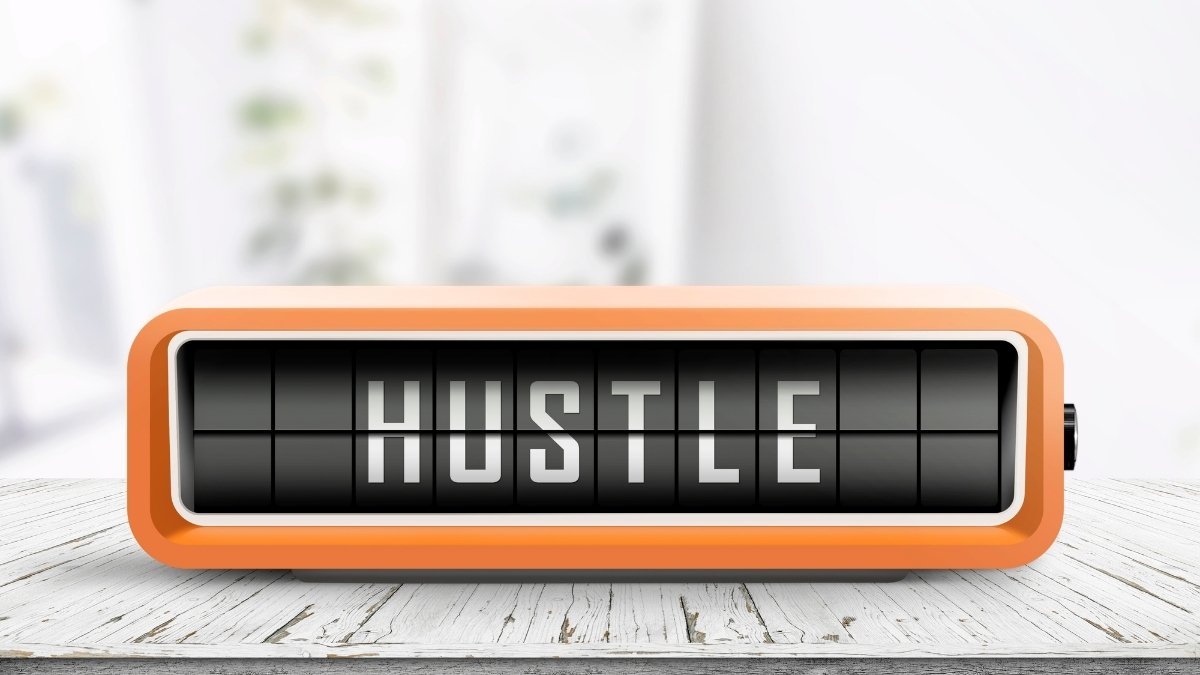
When you step off the ship, you’re on someone else’s turf. You’re an obvious tourist, and you’re a target.
- Unofficial Taxis: Don’t just hop into any car. Unofficial taxi drivers will swarm you at the port exit. They’ll agree on one price and demand a much higher one when you arrive, or they’ll take you on a ridiculously long route to run up a broken meter.
- The “Free” Gift Lure: In many ports, someone will approach you with a “free” bracelet or necklace. It’s a trick to get you into their jewelry store, where a high-pressure salesperson will take over. A much scarier version of this has been reported in Nassau, Bahamas, where people are offered a “free facial”. Victims report being given alcoholic drinks, having creams put on their face, and then feeling disoriented and pressured into buying thousands of dollars of worthless products. Many believe they were drugged.
- Shady Excursions: The little kiosks right by the pier might offer cheaper tours than the cruise line, but it’s a gamble. You could end up with a company that has poor safety standards or just flat-out misrepresents the tour. A classic ripoff is the “panoramic” bus tour, where you spend your whole day looking at landmarks from behind a bus window—often from the wrong side of the bus.
How to stay safe: Plan your port days ahead of time. Only use official, marked taxi stands and agree on the price (and currency!) before you get in. Book your excursions through the cruise line (they guarantee the ship will wait for you if the tour is late) or a highly-rated third-party site like Viator before you leave home. And please, just adopt a firm policy of saying “No, thank you” to any “free” offer on the street and just keep walking.
How to Sail Smart and Actually Enjoy Your Vacation
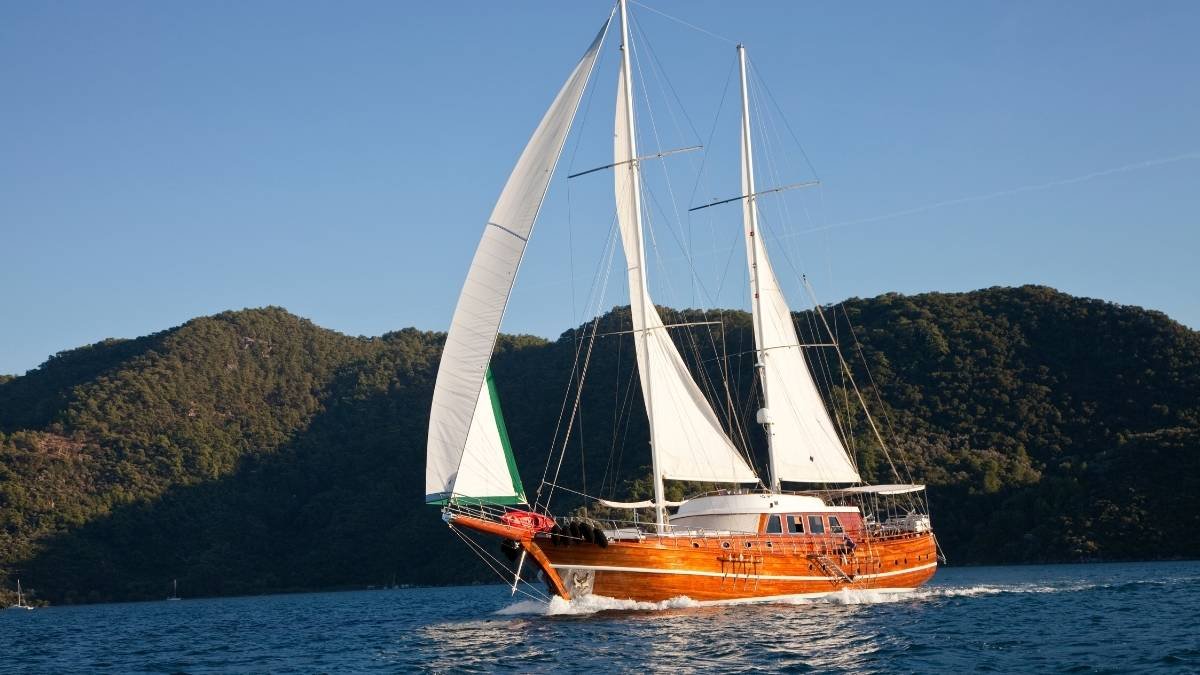
Okay, I know that was a lot. But like I said, I’m not trying to scare you. I’m trying to prepare you. You can absolutely have an amazing, unforgettable cruise without getting taken for a ride. You just have to know the rules of the game.
The Golden Rules of Cruising
Before You Even Go:
- Book Officially: Use the cruise line’s actual website or a travel agent you trust. Period.
- Credit Card Only: This is your best friend. It’s your only real protection against fraud. Never use a cash app, debit card, or bank transfer to pay for travel.
- Read the Bill: Look at your final invoice before you pay. Understand all the port fees, taxes, and gratuities.
On the Ship:
- Have a Daily Budget: Decide what you’re willing to spend on extras each day and treat it like cash. When it’s gone, it’s gone.
- Check Your Bill Every. Single. Day. Use the app or the TV in your room. It takes 30 seconds and can save you a massive headache on the last day.
- Airplane Mode is Your Friend: The second the ship leaves port, turn off your cellular data. International roaming charges can be catastrophic.
- Practice Saying “No, Thank You”: Say it with a smile, but say it firmly. You’ll need it.
- Nothing is Truly “Free”: That “free” seminar or glass of champagne is always, always the start of a sales pitch. Know that going in.
In Port:
- Do Your Homework: A little research goes a long way. Know where you’re going and have a plan.
- Walk Away From the Pier: The best and most authentic shops are almost always a few blocks away from the tourist-trap zone right by the ship.
- Use Official Tours & Taxis: Stick to the official stuff. It’s safer and you’re less likely to get ripped off.
- Trust Your Gut: If a deal feels too good to be true, or a situation feels sketchy, it is. Walk away.
A Few Pieces of Gear to Help You Sail Smarter
Okay, now that you know the playbook, here are a few things I’ve seen savvy travelers use to make their lives easier and keep their money in their pockets. Think of it as your scam-proof toolkit; having the right gear can make a huge difference.
1. An Anti-Theft Crossbody Bag.
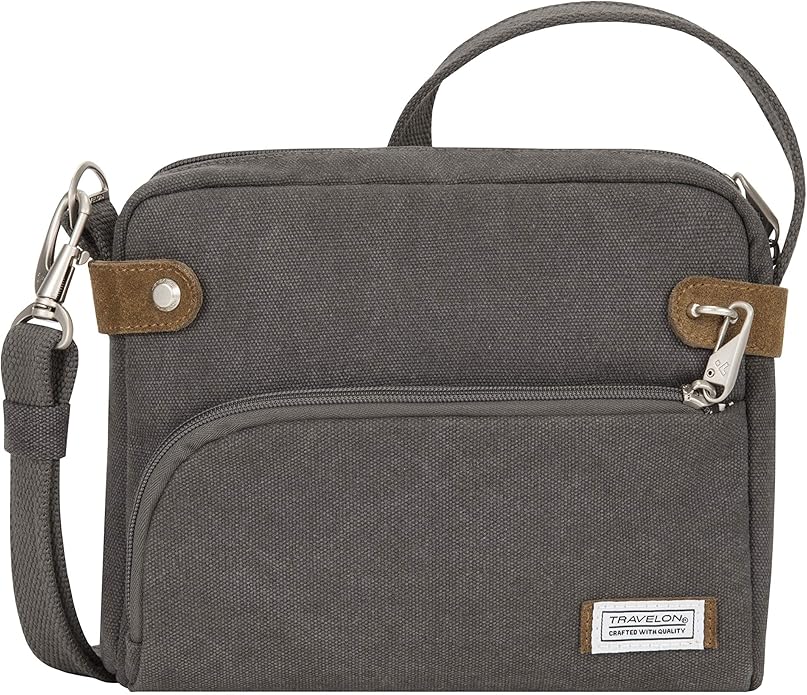
In crowded ports, a regular bag can be an easy target. An anti-theft bag with features like locking zippers and slash-proof straps gives you peace of mind so you can actually enjoy exploring instead of worrying about your wallet and passport. The Travelon brand is a popular choice among seasoned cruisers for a reason.
2. A Portable Travel Safe.

That tiny safe in your cabin is fine, but what about when you’re at the pool or on a beach excursion? A portable safe lets you lock your phone, wallet, and room key to your lounge chair or an umbrella. It’s a simple way to prevent an opportunistic grab-and-go theft while you’re in the water.
3. A Cruise-Approved Power Strip.

You’ll be shocked to find there might only be one or two outlets in your entire cabin. Since regular surge protectors are a fire hazard and banned on ships, you need a specific non-surge power strip. This little gadget is a lifesaver for charging phones, cameras, and everything else for the whole family at once.
4. A Retractable Cruise Lanyard.

Your room key is your life on a cruise—it’s your ID, your credit card, and your room key. Keeping it in a pocket is a recipe for losing it, especially in swimwear. A simple lanyard is the easiest way to keep it on you at all times. Get one with a retractable reel so you can easily hand it to a bartender or tap your door without taking it off.
5. A Collapsible Water Bottle.

A bottle of water on the ship can cost you $4-$5. Instead of paying for that, bring a collapsible water bottle. It takes up almost no space in your luggage when empty. You can fill it up for free at the buffet or water stations to take with you around the ship or into port, saving you a surprising amount of money over the week.
A Final Word from Someone on the Inside
Look, we—the crew—are the people you interact with every day. We’re from all over the world, working for months at a time away from our families to make sure you have a great time.
Most of us aren’t the ones coming up with these sales tactics. We’re often just as uncomfortable with the hard sell as you are. We’re just doing the jobs we’re told to do, following policies made in an office a thousand miles away. Our jobs depend on it.
By reading this, you’re not just saving yourself money. You’re becoming a smarter traveler. You’re helping to push this industry back toward what it should be about: the joy of seeing the world, not the art of the upsell.
So please, come on board. Have the time of your life. Enjoy the ship, the ocean, the amazing places you’ll go. But do it with your eyes wide open. Sail smart, be kind to the crew—a simple, genuine “thank you” means the world to us—and make this vacation one that is truly, 100% yours.






